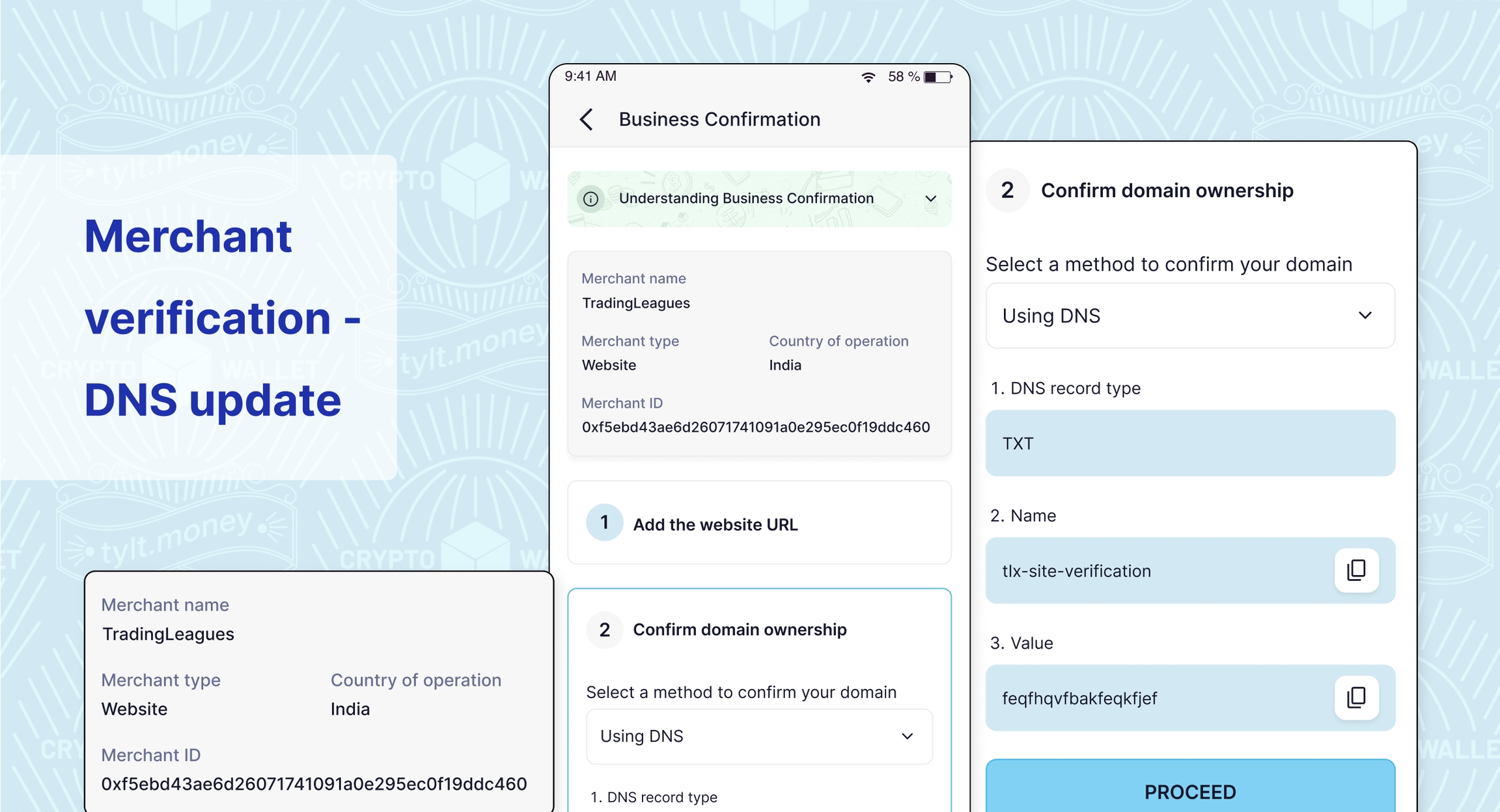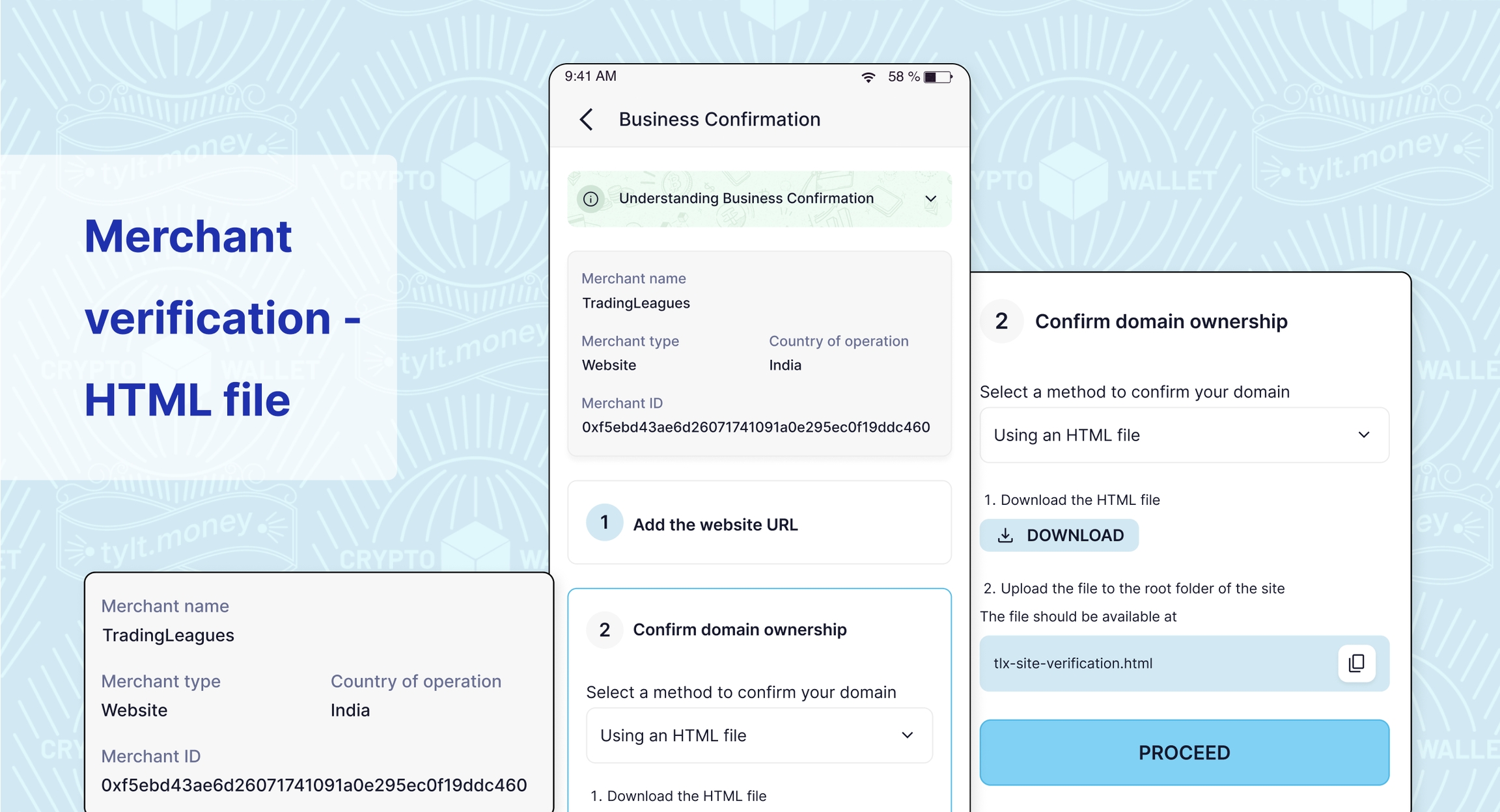Merchant Verification
To utilize the API gateway or access white-labeled payment features, merchants are required to complete a moderation process. This process ensures that the merchant is the legitimate owner of a business domain or a Telegram bot associated with the business. Below are the methods for proving ownership and the steps involved in the verification process.
Website Domain Ownership Verification
Merchants can verify ownership of their domain using one of the following three methods:
DNS Record Update:
The merchant can update their DNS records by adding a TXT record with a value provided on the Business Confirmation section . This will allow verification via the DNS.

Meta Tag Addition:
A unique meta tag found on the Business Confirmation section . The merchant needs to add this meta tag to the homepage of their website to prove ownership.

HTML File Upload:
Download the unique HTML file found on the Business Confirmation section . To verify ownership, the merchant must upload this file to the root directory of their website.

Telegram Bot Ownership Verification
For businesses that operate using a Telegram bot, ownership can be proven by:
Updating the description field of the Telegram bot with a verification code provided by the system.
Once the merchant updates the bot description with this code, the system will verify the bot ownership.